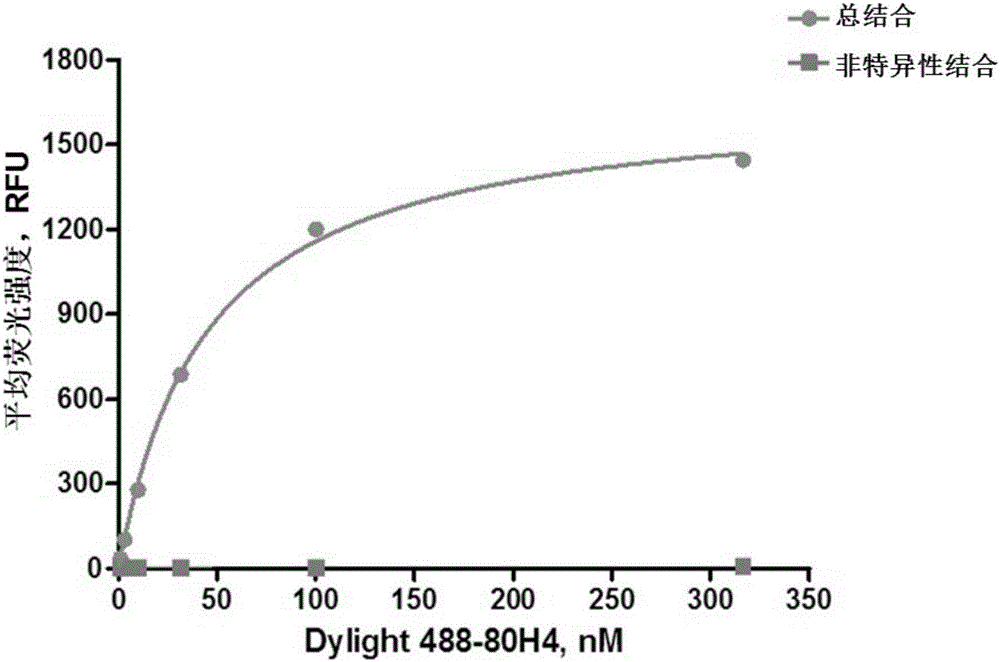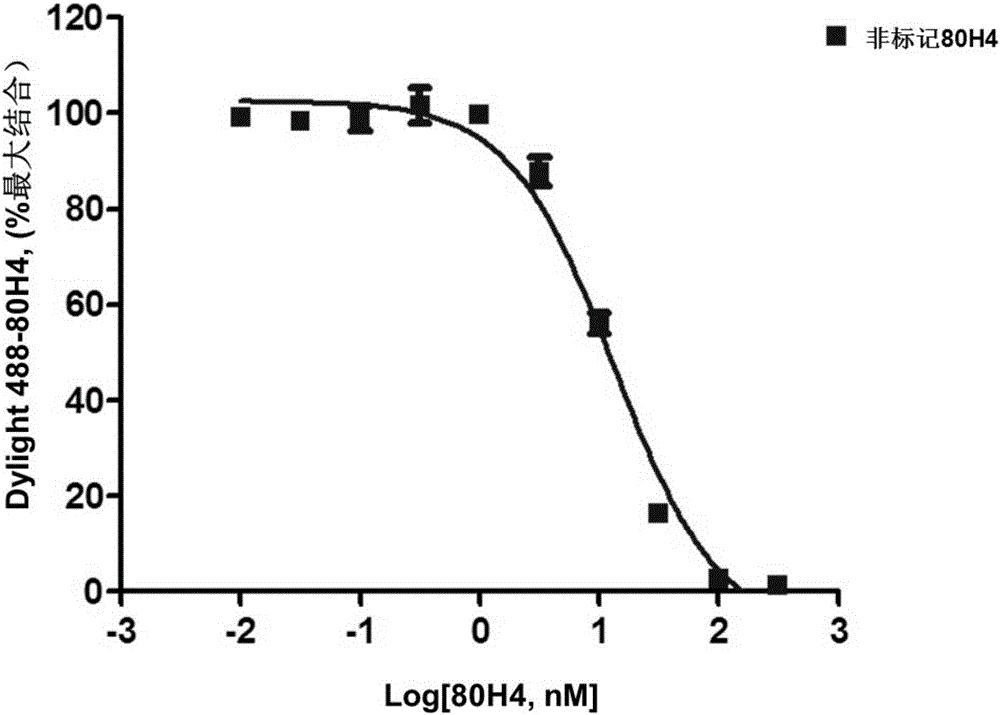Method for detecting affinity of monoclonal antibodies of transmembrane proteins
A monoclonal antibody and transmembrane protein technology, which is applied in the direction of measuring devices, instruments, scientific instruments, etc., can solve the problems that are not easy to be widely used, cannot be analyzed automatically, and radioactive pollution, so as to avoid radioactive isotopes, stable and reliable detection results, and high sensitivity. high effect
- Summary
- Abstract
- Description
- Claims
- Application Information
AI Technical Summary
Problems solved by technology
Method used
Image
Examples
Embodiment
[0027] 1. Construct a stable cell line with high expression of membrane protein
[0028] Inoculate 5×10 5CHO-DHFR-cells were transferred to 6-well plates and transfected with hET after 24 hours of culture A The R gene carrier (modified pIRES, Clontech, commercially available), the culture medium (DMEM / F12+10% dialyzed FBS) was replaced before transfection, and the transfection was carried out according to the transfection conditions recommended by Invitrogen Company Lipofectamine 2000. After 48 hours, change to the complete medium containing 10nM MTX, and change the medium every 3 days. After about two weeks, stable growth clones appear, digest and disperse cell colonies, and gradually increase MTX when the growth reaches 50% healing concentration up to 10 μM. The constructed stable cell lines were tested by FACS respectively, using polyclonal ET A R antibody (Abcam, commercially available) identifies the cell population after pressurization, CHO-DHFR-hET after screening A...
PUM
 Login to View More
Login to View More Abstract
Description
Claims
Application Information
 Login to View More
Login to View More - R&D
- Intellectual Property
- Life Sciences
- Materials
- Tech Scout
- Unparalleled Data Quality
- Higher Quality Content
- 60% Fewer Hallucinations
Browse by: Latest US Patents, China's latest patents, Technical Efficacy Thesaurus, Application Domain, Technology Topic, Popular Technical Reports.
© 2025 PatSnap. All rights reserved.Legal|Privacy policy|Modern Slavery Act Transparency Statement|Sitemap|About US| Contact US: help@patsnap.com



